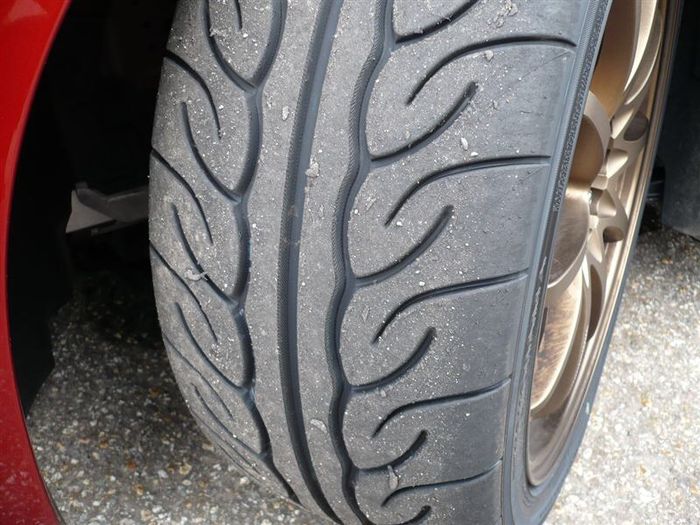All Categories
Featured
Table of Contents
The Michelin offered a comfortable driving experience, qualified by responsive guiding and a progressive understeer equilibrium. Despite the cooler testing problems, Michelin's constant time and hold over 3 laps shows its viability for real-world applications.
The tyre's very first lap was a 2nd slower than the 2nd, directing to a temperature-related grasp rise. For day-to-day use, the Michelin might be a more secure bet.
Low-cost Tyres
It shared Michelin's safe understeer equilibrium yet lacked the latter's determination to transform. Continental and Goodyear's efficiencies were remarkable, with Continental's new PremiumContact 7 showing a significant renovation in wet conditions compared to its predecessor, the PC6. This design was much much less delicate to fill modifications and behaved much like the Michelin, albeit with somewhat much less interaction at the restriction.
It integrated the secure understeer balance of the Michelin and Continental with some stylish handling, confirming both foreseeable and quick. As an all-rounder for this Golf GTI, Goodyear's Asymmetric variety was the standout, showing excellent efficiency in the wet. The Bridgestone Potenza Sport took the crown as the fastest tire, albeit by a little margin.
Chauffeurs looking for an exciting wet drive could discover this tire worth considering. The standout performer in wet braking was the newest tire on examination, the PremiumContact 7, though the outcomes are nuanced.
Best Tyre Fitting Near Me
Ideally, we wanted the cold temperature test to be at around 5-7C, but logistical delays indicated we examined with an ordinary air temperature of 8C and water at 12C. While this was cooler than typical test conditions, it was still warmer than real-world conditions. The warm temperature test was done at an average of 18C air and 19C water.
The 3rd run entailed wet stopping tests on used tires, particularly those machined down to 2mm with a tiny encounter. While we planned to do more with these worn tires, weather restrictions limited our testing. It's worth keeping in mind that damp braking is most crucial at the worn state, as tyres typically improve in completely dry conditions as they wear.

Bridgestone, Goodyear, and Michelin saw the least performance reduction when put on. The Hankook tire registered the tiniest efficiency drop as temperatures cooled down, however it was among the most affected when put on.
Reliable Premium Tyre Selection Near Me
The take-home message below is that no single tire succeeded in all aspects of wet braking, suggesting a complex interplay of elements influencing tyre efficiency under various conditions. There was a standout tyre in aquaplaning, the Continental completed top in both straight and bent aquaplaning, with the Michelin and Goodyear likewise great in much deeper water.

Yokohama might take advantage of somewhat more grip, a concern potentially influenced by the colder conditions. As for handling, all tyres performed within a 2% range on the lap, showing their top quality efficiency (Tyre inspections). Thinking about these tyres essentially target the exact same client, it's fascinating to observe the substantial differences in feeling.
The shock is because the PremiumContact 6 was just one of my favourites for sporty dry drives, but its follower, the PremiumContact 7, seems more fully grown and resembles Michelin's performance. Amongst these, Hankook was the least exact in guiding and communication at the limit. Performance tyres. Both Michelin and Continental provided wonderful preliminary guiding, albeit not the fastest
If I were to advise a tire for a fast lap to an amateur, claim my papa, it would be one of these. After that we have the 'enjoyable' tires, namely Yokohama and Bridgestone. Both were swift to guide and felt sportier than the others, yet the compromise is a much more lively back side, making them more challenging to deal with.
Tyre Packages Near Me (Bedford WA)
It provided similar steering to Bridgestone but used far better comments at the limit and far better grasp. The Bridgestone Potenza Sporting activity, nevertheless, appeared to degrade rather swiftly after simply three laps on this requiring circuit. Lastly, there's Goodyear, which positioned itself someplace in between the fun tyres and those having a tendency in the direction of understeer.
Overall, these tires are excellent entertainers. For road usage, I would certainly lean in the direction of either the Michelin or Goodyear, depending upon your specific choices. In regards to tire wear, the method used in this test is what the market refers to as the 'gold standard' of wear. The wear specialists at Dekra performed this test, which entailed a convoy of cars going across a meticulously prepared path for 12,000 kilometres.
Both the Bridgestone and Yokohama tires significantly underperformed in comparison to the other 4 tires in regards to rolling resistance, with Continental slightly surpassing the rest. Concerning the convenience degree of the tires, as anticipated, a lot of showed an inverted relationship with handling. The Continental, Michelin, and Goodyear tyres executed best throughout different surface area kinds checked.

Bridgestone started to reveal indications of firmness, while Yokohama was specifically disconcerting over pockets. We did measure inner noise degrees; nevertheless, as is frequently the case, the results were very closely matched, and as a result of weather constraints, we were unable to carry out a subjective analysis of the tires noise. Finally, we took a look at abrasion figures, which determine the amount of tyre walk shed per kilometre, normalised to a one-tonne automobile.
Reliable Cost-effective Car Tyres Near Me – Bayswater 6052 WA
This number stands for the quantity of rubber dirt your tires create while driving. Michelin led in this category, generating over 9% much less rubber particulate matter.
Latest Posts
Affordable Cost-effective Car Tyres Near Me – Bennett Springs WA
Tyre Repair Services
Tyre Fitting Services Near Me – Bennett Springs